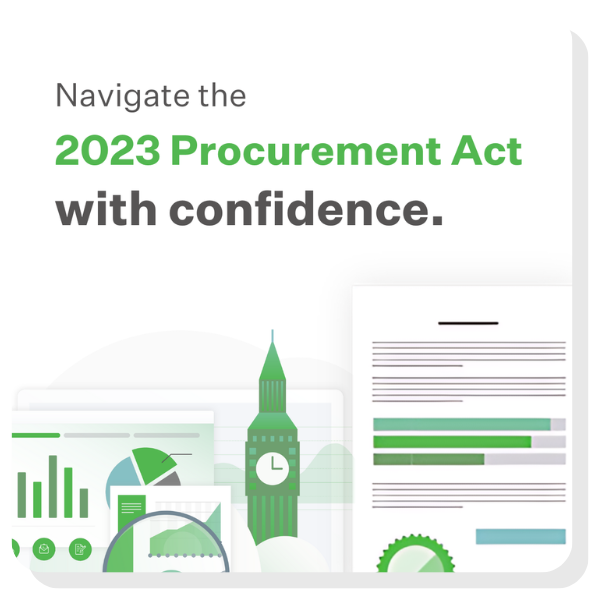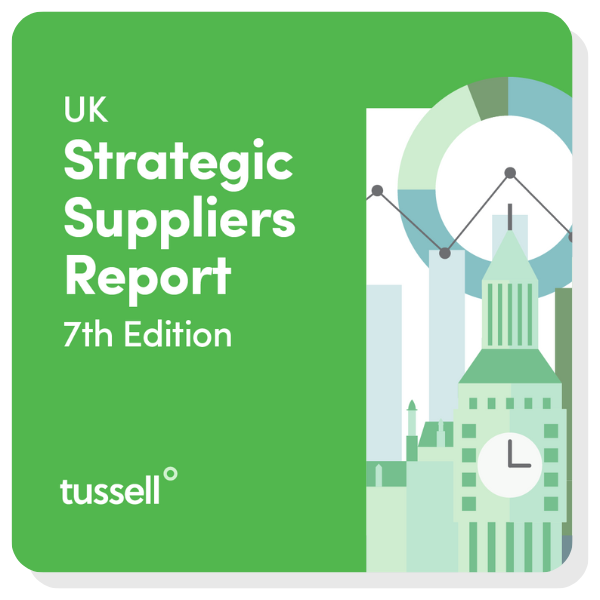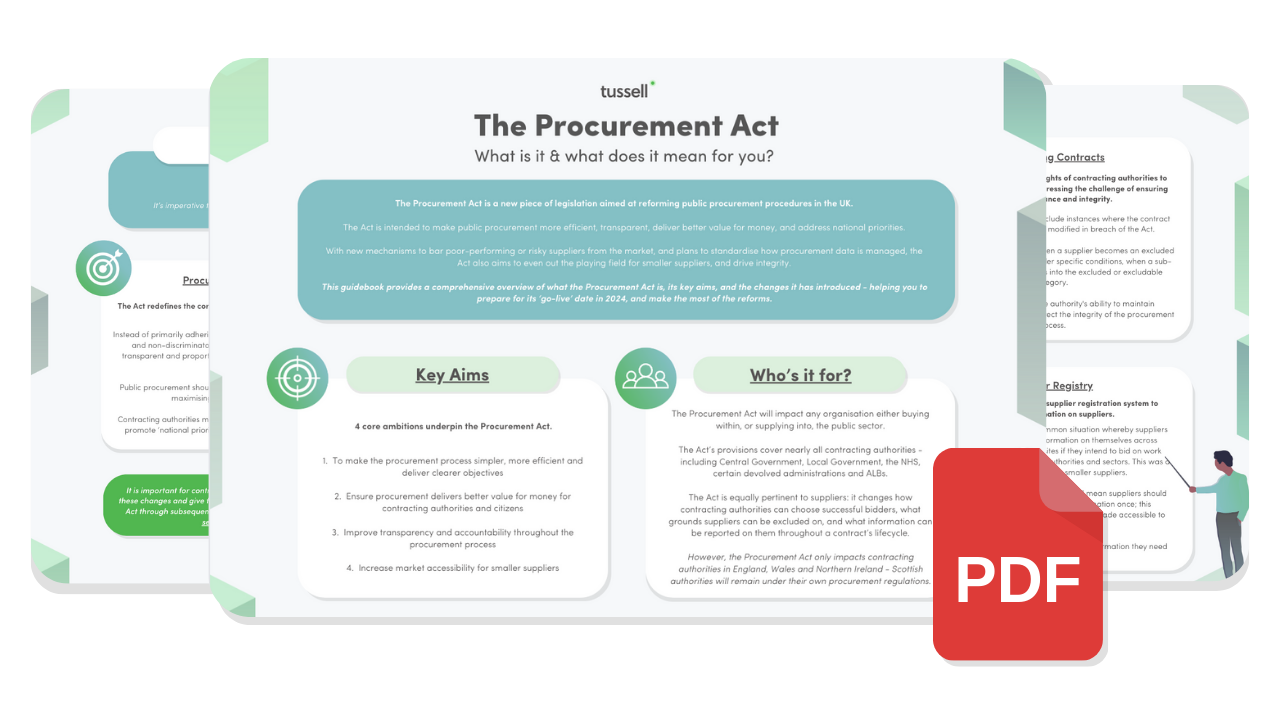To write a compelling, winning bid, you need to explain how your offering addresses the contracting authority's needs. Deciphering these needs is not always easy from the tender document, however. Instead, you'll need to do some digging.
In the latest instalment of the Public Sector Sales Podcast, we sat down with Ben Greenstone - Managing Director of tech-specialist policy and political consultancy Taso Advisory - to learn how you can begin to truly understand the problems, pain-points and issues that a contracting authority is facing, and how you can use this intelligence to elevate your bids.
We've condensed the key insights from our chat below, or you can access the full interview on our YouTube channel.
Skip ahead to read about:
-
The 3 common mistakes suppliers make when entering the public sector
-
What can suppliers do pre-tender with this intelligence behind them?
⛏️ The 4 layers of public sector needs
To more deeply understand an authority's needs and desires when writing a bid, relying on the tender document itself won't cut it. As Ben says, the tender comes right "at the end of the process".
You need to look more broadly to understand the problems and agendas that created the need for the tender in the first place. Ben divides this search into 4 layers:
-
Most broadly, all contracting authorities share a common purpose: to better the lives of citizens. While it might not always be directly apparent, authorities procure goods and services to deliver more effective services and results for society.
-
What 'effective' looks like is, in part, determined by the overarching aims and ideals of the current government. These aims can be gleaned in key documents like their election manifesto, flagship policy statements, and major policy plans. This also includes overarching procurement policy, like PPNs or proposed procurement legislation.
-
To implement these aims, individual departments and authorities will release their own strategies, reports and statements. These lay out the short and long term objectives of the authority, and where they might need external support to deliver upon them.
-
Tenders often come as a result of these strategies: as a means to put into action the goals of the given authority. For Ben, the key question to ask for every tender opportunity is: "what is the change that this particular tender is looking to affect, what do they want to achieve?"
To properly understand the needs underpinning a tender, you need to appreciate each of these layers. Read the contracting authority's relevant strategy reports, keep up-to-date on their recent policy announcements, and see whether leading figures have made commented on the tender's area of relevance.
By taking this more holistic approach, you will begin to understand what individual policies or strategies to refer to, what language and terminology to use, and how to narrativise and frame your offering as fitting into this larger context. Together, this will compound the relevance and depth of your bid in the authority's eyes.
The role of data in understanding public sector needs
Understanding public sector needs is not an entirely quantitative affair. Using hard data - like spend, contract award and framework data provided by Tussell - you can see where and when public authorities have 'put their money where their mouth is'.
As Ben argues: "knowing how the public sector has spent and thought about spending, and where the spend is, is all incredibly important in understanding where your opportunity is".
Hard data can help set realistic expectations as to which kinds of authorities are spending the money to address certain scales or complexities of issues: simply put, "if the money's not there, the money's not there".
🔎 Unpicking meaning within a tender
Let's say that you're on the back foot and haven't had time to research a contracting authority's deeper needs when a new opportunity goes live. What can you unpick from the tender document itself to help deepen your bid's resonance?
Unfortunately, often not much. As Ben argues: "tenders typically aren't beautifully crafted things that you can gently peel back to find the details. There is no substitute for hard work: getting into the detail and reading as much as you can from the department" outside the tender document is critical.
Again, gleaning the contracting authorities' underlying needs and issues lies in consulting their overarching strategies, reports and published statistics.
Moreover, it's worth remembering why the given authority exists in the first place, and how this relates to the tender. HM Revenue & Customs, for instance, exists to collect taxes as effectively and efficiently as possible: if your offer isn't directly or indirectly catered to this end, it's won't resonate as effectively.
Ben argues that your bid needs to strike the right balance between referencing these 'macro' and 'micro' aims of the contracting authority. In his experience, suppliers often faulter by emphasising too heavily on one or the other; without this balance, your bid won't be as convincing or direct.
😨 The 3 common mistakes suppliers make when entering the public sector
Even with this deeper understanding behind you, Ben notes several mistakes hopeful suppliers still tend to make when entering the world of public sector procurement. The top mistakes he encounters are:
-
Assuming that you can sell your offering based on its quality alone. While the public procurement process undoubtedly values the quality of a product or service, price is a much more heavily weighted consideration in public vs. private procurement. After all, taxpayer's money is at stake.
-
Thinking that you can close deals quickly. As Ben's advice has - hopefully - made clear, winning public sector work requires deep understanding, time and relationship-building; don't expect a quick turnaround.
-
Not appreciating the strict requirements of public sector procurement. Entering contractual work with a public authority does not afford the same flexibility as the private sector: you'll be much more heavily scrutinised, monitored and held to account.
These mistakes are made early in the bidding process, says Ben, and they're easy to make. Public sector procurement is an entirely different world to private procurement, and the high level of public funding available can lead some suppliers to misinterpret the ease of earning revenue from government. Preparation, time and trust are all pivotal to long-term, sustainable success in the public sector.
🏆 With all this information behind you, what can suppliers do pre-tender to ensure success?
Ben concluded with the following tips to make sure you properly harness this deeper understanding of the public sector's needs:
-
Be willing to have open, helpful conversations with contracting authorities. If you want to know more about their objectives or issues, just ask them - more often than not, they'll welcome external input from experts.
-
When transitioning from the private to public sectors, consider: does all the collateral you've built - your messaging, your key value-adds, your narratives etc. - actually align with the public sector, and the underlying needs you've uncovered?
-
Remember: there are tens of thousands of SMEs who can hone your message and narrative with in the private sector - not convincing, and losing, some of them is inevitable. In the public sector, there are a finite number of departments and bodies to do this with: you won't get as many shots to refine your pitch. This makes thorough research, digging and planning even more critical.
*
As Ben makes clear, winning public sector work is a long game: to get a step ahead of your competitors, you need to put in the leg work to truly understand the needs, problems and agendas your offering address.
-
Listen to the full interview with Ben on our YouTube channel.
-
Read and listen to the other instalments of the Public Sector Sales Podcast series here.
-
To find out more about Taso Advisory - and how they can help you understand the public sector's needs - visit www.tasoadvisory.com








.png?width=80&height=80&name=james%20v2%20(1).png)






